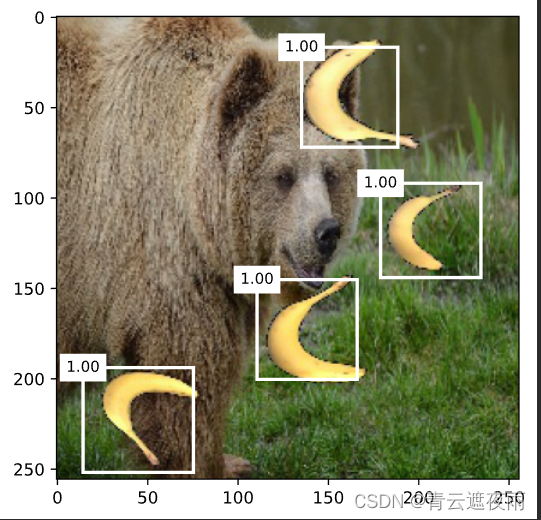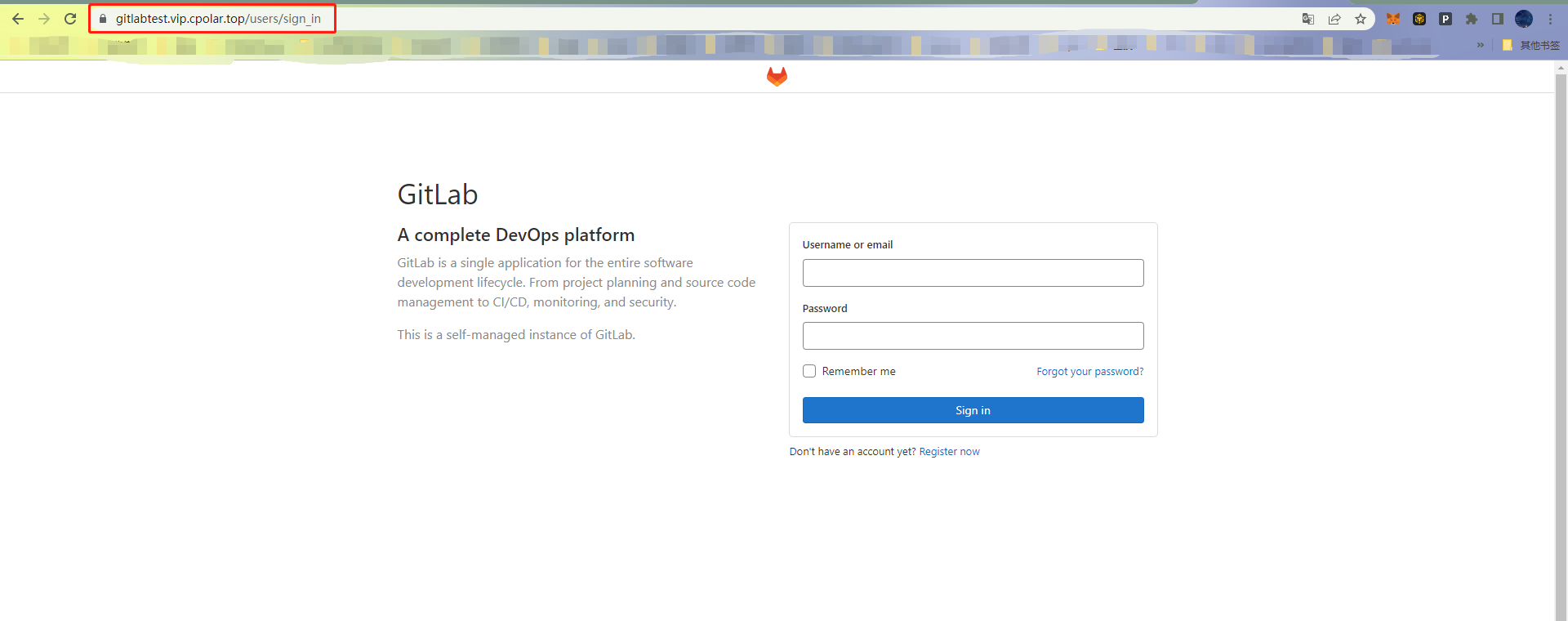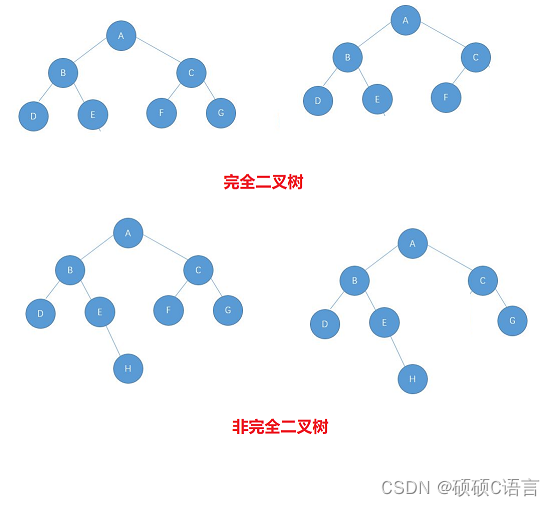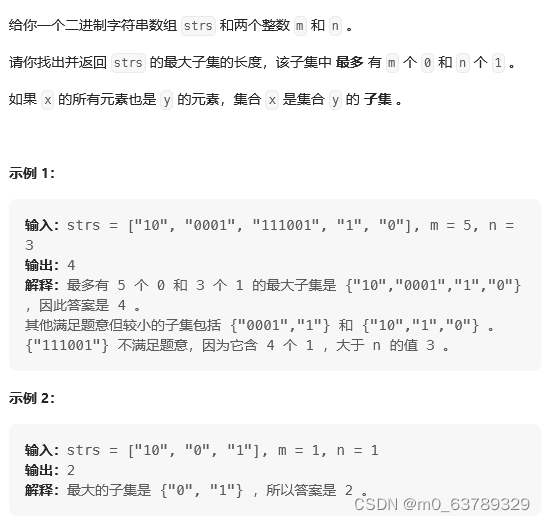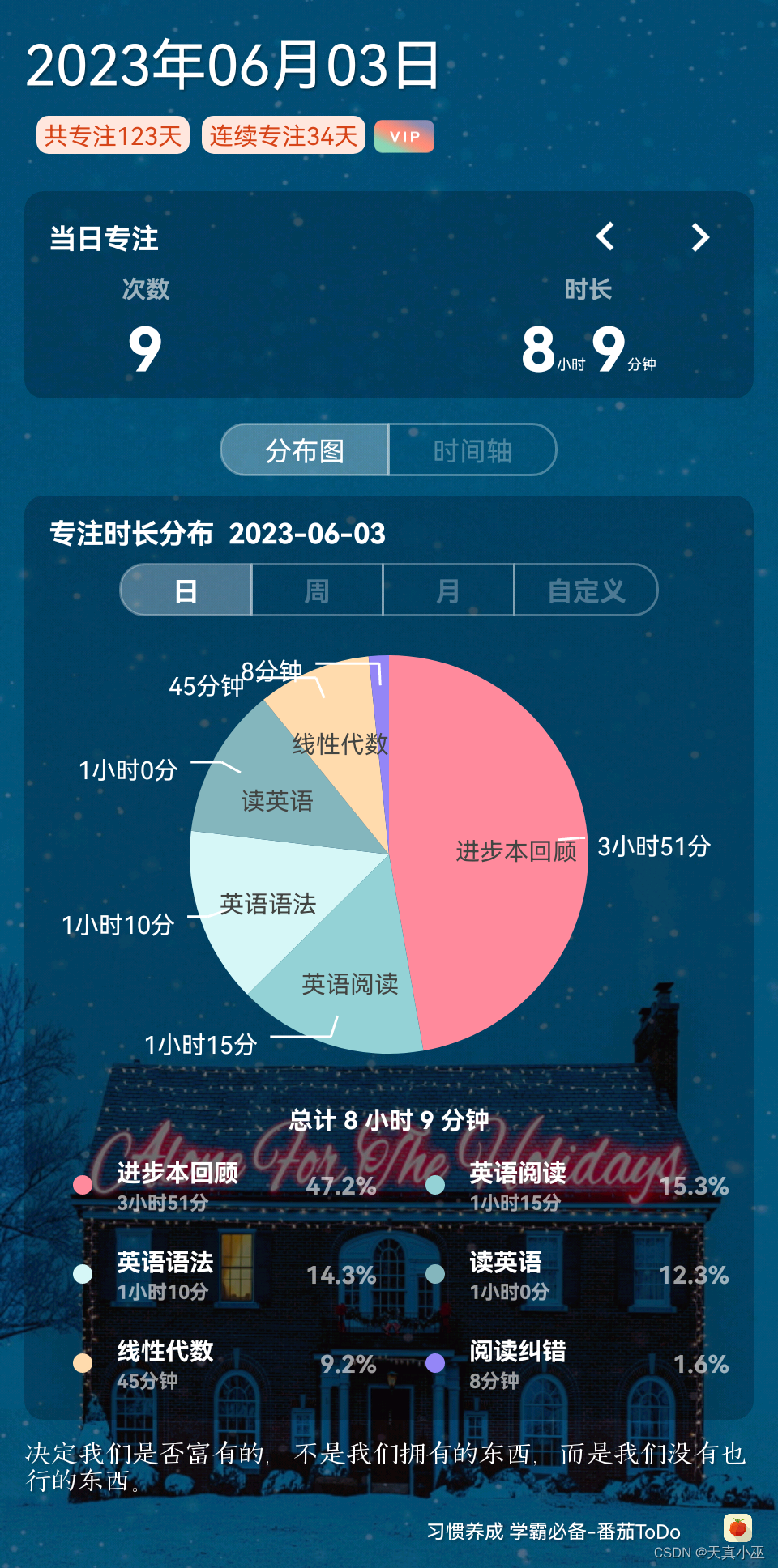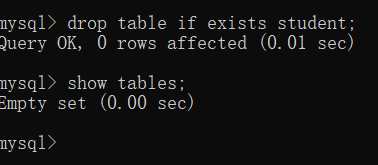有关锚框的部分可以看我的另一篇文章:点击这里。下文不再赘述
文章目录
- 多尺度目标检测
- 多尺度锚框
- 数据集
- 单发多框检测(SSD)
- 模型设计
- 类别预测层
- 边界框预测层
- 连结多尺度的预测
- 高和宽减半块
- 基本网络块
- 完整的模型
- 训练
- 导入数据集
- 定义损失函数
- Utils函数(用于为每个锚框标注类别和偏移量)
- 训练函数
- 预测
多尺度目标检测
多尺度锚框
减少图像上的锚框数量并不困难。 比如,我们可以在输入图像中均匀采样一小部分像素,并以它们为中心生成锚框。 此外,在不同尺度下,我们可以生成不同数量和不同大小的锚框。 直观地说,比起较大的目标,较小的目标在图像上出现的可能性更多样。 例如, 1 × 1 1\times 1 1×1、 1 × 2 1\times 2 1×2和 2 × 2 2\times2 2×2的目标可以分别以4、2和1种可能的方式出现在 2 × 2 2\times 2 2×2图像上。 因此,当使用较小的锚框检测较小的物体时,我们可以采样更多的区域,而对于较大的物体,我们可以采样较少的区域。
让我们先读取一张图像。 它的高度和宽度分别为561和728像素
%matplotlib inline
import torch
from d2l import torch as d2l
img = d2l.plt.imread('../img/catdog.jpg')
h, w = img.shape[:2]
h, w

display_anchors函数定义如下。 我们在特征图(fmap)上生成锚框(anchors),每个单位(像素)作为锚框的中心。 由于锚框中的
(
x
,
y
)
(x,y)
(x,y)轴坐标值(anchors)已经被除以特征图(fmap)的宽度和高度,因此这些值介于0和1之间,表示特征图中锚框的相对位置。
由于锚框(anchors)的中心分布于特征图(fmap)上的所有单位,因此这些中心必须根据其相对空间位置在任何输入图像上均匀分布。 更具体地说,给定特征图的宽度和高度fmap_w和fmap_h,以下函数将均匀地对任何输入图像中fmap_h行和fmap_w列中的像素进行采样。 以这些均匀采样的像素为中心,将会生成大小为s(假设列表s的长度为1)且宽高比(ratios)不同的锚框。
def display_anchors(fmap_w, fmap_h, s):
d2l.set_figsize()
# 前两个维度上的值不影响输出
fmap = torch.zeros((1, 10, fmap_h, fmap_w))
anchors = d2l.multibox_prior(fmap, sizes=s, ratios=[1, 2, 0.5])
bbox_scale = torch.tensor((w, h, w, h))
d2l.show_bboxes(d2l.plt.imshow(img).axes,
anchors[0] * bbox_scale)
首先,让我们考虑探测小目标。 为了在显示时更容易分辨,在这里具有不同中心的锚框不会重叠: 锚框的尺度设置为0.15,特征图的高度和宽度设置为4。 我们可以看到,图像上4行和4列的锚框的中心是均匀分布的。
display_anchors(fmap_w=4, fmap_h=4, s=[0.15])

然后,我们将特征图的高度和宽度减小一半,然后使用较大的锚框来检测较大的目标。 当尺度设置为0.4时,一些锚框将彼此重叠。
display_anchors(fmap_w=2, fmap_h=2, s=[0.4])

既然我们已经生成了多尺度的锚框,我们就将使用它们来检测不同尺度下各种大小的目标。 下面,我们介绍一种基于CNN的多尺度目标检测方法,将在下文中实现。
在某种规模上,假设我们有 c c c张形状为 h × w h\times w h×w的特征图。 使用上述的方法,我们生成了 h w hw hw组锚框,其中每组都有 a a a个中心相同的锚框。 例如,在上述实验的第一个尺度上,给定10个(通道数量) 4 × 4 4\times 4 4×4的特征图,我们生成了16组锚框,每组包含3个中心相同的锚框。 接下来,每个锚框都根据真实值边界框来标记了类和偏移量。 在当前尺度下,目标检测模型需要预测输入图像上 h w hw hw组锚框类别和偏移量,其中不同组锚框具有不同的中心。
当不同层的特征图在输入图像上分别拥有不同大小的感受野时,它们可以用于检测不同大小的目标。 例如,我们可以设计一个神经网络,其中靠近输出层的特征图单元具有更宽的感受野,这样它们就可以从输入图像中检测到较大的目标。
简言之,我们可以利用深层神经网络在多个层次上对图像进行分层表示,从而实现多尺度目标检测。
数据集
获取数据集
%matplotlib inline
import os
import pandas as pd
from mxnet import gluon, image, np, npx
from d2l import mxnet as d2l
npx.set_np()
#@save
d2l.DATA_HUB['banana-detection'] = (
d2l.DATA_URL + 'banana-detection.zip',
'5de26c8fce5ccdea9f91267273464dc968d20d72')
#@save
def read_data_bananas(is_train=True):
"""读取香蕉检测数据集中的图像和标签"""
data_dir = d2l.download_extract('banana-detection')
csv_fname = os.path.join(data_dir, 'bananas_train' if is_train
else 'bananas_val', 'label.csv')
csv_data = pd.read_csv(csv_fname)
csv_data = csv_data.set_index('img_name')
images, targets = [], []
for img_name, target in csv_data.iterrows():
images.append(torchvision.io.read_image(
os.path.join(data_dir, 'bananas_train' if is_train else
'bananas_val', 'images', f'{img_name}')))
# 这里的target包含(类别,左上角x,左上角y,右下角x,右下角y),
# 其中所有图像都具有相同的香蕉类(索引为0)
targets.append(list(target))
return images, torch.tensor(targets).unsqueeze(1) / 256
#@save
class BananasDataset(torch.utils.data.Dataset):
"""一个用于加载香蕉检测数据集的自定义数据集"""
def __init__(self, is_train):
self.features, self.labels = read_data_bananas(is_train)
print('read ' + str(len(self.features)) + (f' training examples' if
is_train else f' validation examples'))
def __getitem__(self, idx):
return (self.features[idx].float(), self.labels[idx])
def __len__(self):
return len(self.features)
#@save
def load_data_bananas(batch_size):
"""加载香蕉检测数据集"""
train_iter = torch.utils.data.DataLoader(BananasDataset(is_train=True),
batch_size, shuffle=True)
val_iter = torch.utils.data.DataLoader(BananasDataset(is_train=False),
batch_size)
return train_iter, val_iter
batch_size, edge_size = 32, 256
train_iter, _ = load_data_bananas(batch_size)
batch = next(iter(train_iter))
batch[0].shape, batch[1].shape
展示
#@save
def show_bboxes(axes, bboxes, labels=None, colors=None):
"""显示所有边界框"""
def _make_list(obj, default_values=None):
if obj is None:
obj = default_values
elif not isinstance(obj, (list, tuple)):
obj = [obj]
return obj
labels = _make_list(labels)
colors = _make_list(colors, ['b', 'g', 'r', 'm', 'c'])
for i, bbox in enumerate(bboxes):
color = colors[i % len(colors)]
rect = d2l.bbox_to_rect(bbox.detach().numpy(), color)
axes.add_patch(rect)
if labels and len(labels) > i:
text_color = 'k' if color == 'w' else 'w'
axes.text(rect.xy[0], rect.xy[1], labels[i],
va='center', ha='center', fontsize=9, color=text_color,
bbox=dict(facecolor=color, lw=0))
imgs = (batch[0][0:10].permute(0, 2, 3, 1)) / 255
axes = d2l.show_images(imgs, 2, 5, scale=2)
for ax, label in zip(axes, batch[1][0:10]):
show_bboxes(ax, [label[0][1:5] * edge_size], colors=['w'])
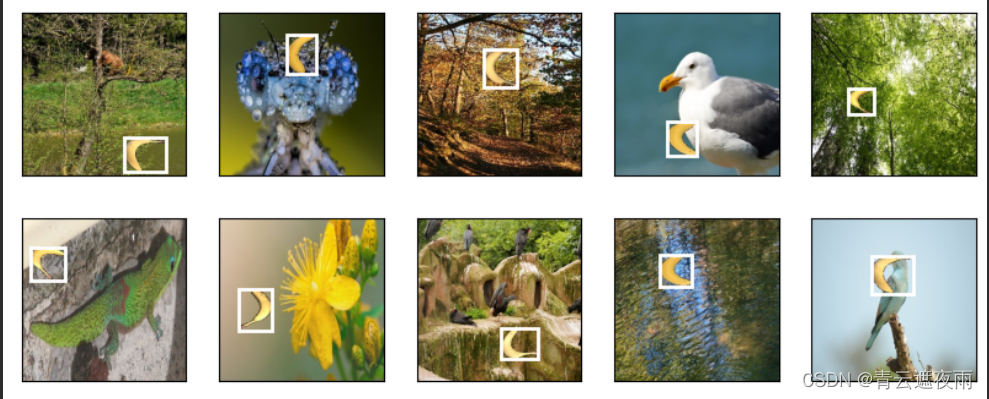
单发多框检测(SSD)
模型设计
下图描述了单发多框检测模型的设计。 此模型主要由基础网络组成,其后是几个多尺度特征块。 基本网络用于从输入图像中提取特征,因此它可以使用深度卷积神经网络。 单发多框检测论文中选用了在分类层之前截断的VGG (Liu et al., 2016),现在也常用ResNet替代。 我们可以设计基础网络,使它输出的高和宽较大。 这样一来,基于该特征图生成的锚框数量较多,可以用来检测尺寸较小的目标。 接下来的每个多尺度特征块将上一层提供的特征图的高和宽缩小(如减半),并使特征图中每个单元在输入图像上的感受野变得更广阔。
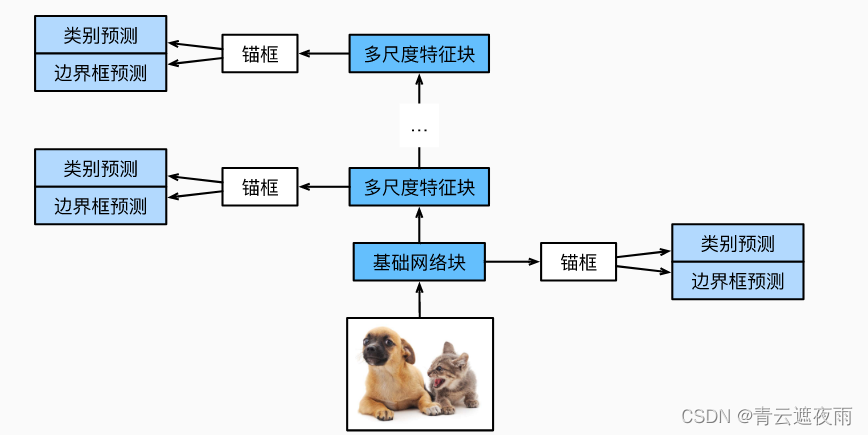
由于接近上图顶部的多尺度特征图较小,但具有较大的感受野,它们适合检测较少但较大的物体。 简而言之,通过多尺度特征块,单发多框检测生成不同大小的锚框,并通过预测边界框的类别和偏移量来检测大小不同的目标,因此这是一个多尺度目标检测模型。
类别预测层
设目标类别的数量为 q q q。这样一来,锚框有 q + 1 q+1 q+1个类别,其中0类是背景。 在某个尺度下,设特征图的高和宽分别为 h h h和 w w w。 如果以其中每个单元为中心生成 a a a个锚框,那么我们需要对 w h a wha wha个锚框进行分类。 如果使用全连接层作为输出,很容易导致模型参数过多。 单发多框检测采用卷积层的通道来输出类别预测的方法来降低模型复杂度。
具体来说,类别预测层使用一个保持输入高和宽的卷积层。 这样一来,输出和输入在特征图宽和高上的空间坐标一一对应。 考虑输出和输入同一空间坐标 ( x , y ) (x,y) (x,y):输出特征图上 ( x , y ) (x,y) (x,y)坐标的通道里包含了以输入特征图 ( x , y ) (x,y) (x,y)坐标为中心生成的所有锚框的类别预测。 因此输出通道数为 a ( q + 1 ) a(q+1) a(q+1),其中索引为 i ( q + 1 ) + j ( 0 < = j < = q ) i(q+1)+j(0<=j<=q) i(q+1)+j(0<=j<=q)的通道代表了索引为 i i i的锚框有关类别索引为 j j j的预测。
在下面,我们定义了这样一个类别预测层,通过参数num_anchors和num_classes分别指定了 a a a和 q q q。 该图层使用填充为1的 3 × 3 3\times 3 3×3的卷积层。此卷积层的输入和输出的宽度和高度保持不变。
%matplotlib inline
import torch
import torchvision
from torch import nn
from torch.nn import functional as F
from d2l import torch as d2l
def cls_predictor(num_inputs, num_anchors, num_classes):
return nn.Conv2d(num_inputs, num_anchors * (num_classes + 1),
kernel_size=3, padding=1)
边界框预测层
边界框预测层的设计与类别预测层的设计类似。 唯一不同的是,这里需要为每个锚框预测4个偏移量,而不是 q + 1 q+1 q+1个类别。
def bbox_predictor(num_inputs, num_anchors):
return nn.Conv2d(num_inputs, num_anchors * 4, kernel_size=3, padding=1)
连结多尺度的预测
正如我们所提到的,单发多框检测使用多尺度特征图来生成锚框并预测其类别和偏移量。 在不同的尺度下,特征图的形状或以同一单元为中心的锚框的数量可能会有所不同。 因此,不同尺度下预测输出的形状可能会有所不同。
在以下示例中,我们为同一个小批量构建两个不同比例(Y1和Y2)的特征图,其中Y2的高度和宽度是Y1的一半。 以类别预测为例,假设Y1和Y2的每个单元分别生成了 5 5 5个和 3 3 3个锚框。 进一步假设目标类别的数量为 10 10 10,对于特征图Y1和Y2,类别预测输出中的通道数分别为 55 55 55和 33 33 33,其中任一输出的形状是(批量大小,通道数,高度,宽度)。
def forward(x, block):
return block(x)
Y1 = forward(torch.zeros((2, 8, 20, 20)), cls_predictor(8, 5, 10))
Y2 = forward(torch.zeros((2, 16, 10, 10)), cls_predictor(16, 3, 10))
Y1.shape, Y2.shape

正如我们所看到的,除了批量大小这一维度外,其他三个维度都具有不同的尺寸。 为了将这两个预测输出链接起来以提高计算效率,我们将把这些张量转换为更一致的格式。
通道维包含中心相同的锚框的预测结果。我们首先将通道维移到最后一维。 因为不同尺度下批量大小仍保持不变,我们可以将预测结果转成二维的(批量大小,高 × \times ×宽 × \times ×通道数)的格式,以方便之后在维度 1 1 1上的连结。
def flatten_pred(pred):
return torch.flatten(pred.permute(0, 2, 3, 1), start_dim=1)
def concat_preds(preds):
return torch.cat([flatten_pred(p) for p in preds], dim=1)
高和宽减半块
高和宽减半块(downsampling block)是目标检测中常用的一种卷积块,它的作用是将输入特征图的高度和宽度缩小一半,同时增加通道数。通常,高和宽减半块由一个卷积层和一个池化层组成,其中卷积层用于增加通道数,池化层用于缩小高度和宽度。
def down_sample_blk(in_channels, out_channels):
blk = []
for _ in range(2):
blk.append(nn.Conv2d(in_channels, out_channels,
kernel_size=3, padding=1))
blk.append(nn.BatchNorm2d(out_channels))
blk.append(nn.ReLU())
in_channels = out_channels
blk.append(nn.MaxPool2d(2))
return nn.Sequential(*blk)
这段代码实现了一个高和宽减半块(downsampling block),用于将输入特征图的高度和宽度减半,同时增加通道数。该函数的输入参数包括输入通道数 in_channels 和输出通道数 out_channels,返回值是一个由多个卷积层、批量归一化层、ReLU 激活函数和最大池化层组成的序列(nn.Sequential 类型)。
- 首先创建一个空列表 blk,用于存储卷积块中的各层。
- 然后,利用 for 循环向 blk 中依次添加两个卷积层、一个批量归一化层和一个 ReLU 激活函数。这里使用 3 × 3 3\times3 3×3 的卷积核和 1 1 1 的填充,保持特征图的大小不变。每个卷积层的输入通道数为 in_channels,输出通道数为 out_channels,其中第一个卷积层的输入通道数为输入特征图的通道数 in_channels,后续的卷积层的输入通道数为上一个卷积层的输出通道数 out_channels,以此类推。
- 添加一个 2 × 2 2\times2 2×2 的最大池化层,用于将特征图的高度和宽度缩小一半。
- 最后,将 blk 列表中的所有层组成一个序列,并返回该序列。
基本网络块
为了计算简洁,我们构造了一个小的基础网络,该网络串联3个高和宽减半块,并逐步将通道数翻倍。 给定输入图像的形状为 256 × 256 256\times 256 256×256
def base_net():
blk = []
num_filters = [3, 16, 32, 64]
for i in range(len(num_filters) - 1):
blk.append(down_sample_blk(num_filters[i], num_filters[i+1]))
return nn.Sequential(*blk)
forward(torch.zeros((2, 3, 256, 256)), base_net()).shape
完整的模型
完整的单发多框检测模型由五个模块组成。每个块生成的特征图既用于生成锚框,又用于预测这些锚框的类别和偏移量。在这五个模块中,第一个是基本网络块,第二个到第四个是高和宽减半块,最后一个模块使用全局最大池将高度和宽度都降到1。从技术上讲,第二到第五个区块都是多尺度特征块。
def get_blk(i):
if i == 0:
blk = base_net()
elif i == 1:
blk = down_sample_blk(64, 128)
elif i == 4:
blk = nn.AdaptiveMaxPool2d((1,1))
else:
blk = down_sample_blk(128, 128)
return blk
前向传播函数
#@save
def multibox_prior(data, sizes, ratios):
"""生成以每个像素为中心具有不同形状的锚框"""
in_height, in_width = data.shape[-2:]
device, num_sizes, num_ratios = data.device, len(sizes), len(ratios)
boxes_per_pixel = (num_sizes + num_ratios - 1)
size_tensor = torch.tensor(sizes, device=device)
ratio_tensor = torch.tensor(ratios, device=device)
# 为了将锚点移动到像素的中心,需要设置偏移量。
# 因为一个像素的高为1且宽为1,我们选择偏移我们的中心0.5
offset_h, offset_w = 0.5, 0.5
steps_h = 1.0 / in_height # 在y轴上缩放步长
steps_w = 1.0 / in_width # 在x轴上缩放步长
# 生成锚框的所有中心点
center_h = (torch.arange(in_height, device=device) + offset_h) * steps_h
center_w = (torch.arange(in_width, device=device) + offset_w) * steps_w
shift_y, shift_x = torch.meshgrid(center_h, center_w, indexing='ij')
shift_y, shift_x = shift_y.reshape(-1), shift_x.reshape(-1)
# 生成“boxes_per_pixel”个高和宽,
# 之后用于创建锚框的四角坐标(xmin,xmax,ymin,ymax)
w = torch.cat((size_tensor * torch.sqrt(ratio_tensor[0]),
sizes[0] * torch.sqrt(ratio_tensor[1:])))\
* in_height / in_width # 处理矩形输入
h = torch.cat((size_tensor / torch.sqrt(ratio_tensor[0]),
sizes[0] / torch.sqrt(ratio_tensor[1:])))
# 除以2来获得半高和半宽
anchor_manipulations = torch.stack((-w, -h, w, h)).T.repeat(
in_height * in_width, 1) / 2
# 每个中心点都将有“boxes_per_pixel”个锚框,
# 所以生成含所有锚框中心的网格,重复了“boxes_per_pixel”次
out_grid = torch.stack([shift_x, shift_y, shift_x, shift_y],
dim=1).repeat_interleave(boxes_per_pixel, dim=0)
output = out_grid + anchor_manipulations
return output.unsqueeze(0)
以上代码的具体解释见:点击这里。
def blk_forward(X, blk, size, ratio, cls_predictor, bbox_predictor):
Y = blk(X)
anchors = multibox_prior(Y, sizes=size, ratios=ratio)
cls_preds = cls_predictor(Y)
bbox_preds = bbox_predictor(Y)
return (Y, anchors, cls_preds, bbox_preds)
这段代码实现了一个卷积块(blk)的前向传播过程,包括特征提取、生成锚框、预测类别和边界框等步骤。输入参数包括输入特征图 X、卷积块 blk、锚框大小 size、锚框长宽比 ratio、类别预测器 cls_predictor 和边界框预测器 bbox_predictor,返回值是一个元组,包括输出特征图 Y、锚框、类别预测和边界框预测四项。
- 将输入特征图 X 作为卷积块 blk 的输入,经过卷积块的一系列操作后,得到输出特征图 Y。
- 利用 multibox_prior 函数生成一组锚框,其中 sizes 参数表示锚框的大小,ratios 参数表示锚框的长宽比。multibox_prior 函数根据输入特征图的大小和锚框参数生成一组锚框,返回值是一个形状为 ( 1 , A , 4 ) (1, A, 4) (1,A,4) 的张量,其中 A A A 表示锚框的数量。
- 将输出特征图 Y 作为类别预测器 cls_predictor 的输入,得到类别预测结果 cls_preds,形状为 ( N , A , C ) (N, A, C) (N,A,C),其中 N N N 表示批量大小, A A A 表示锚框的数量, C C C 表示类别数。
- 将输出特征图 Y 作为边界框预测器 bbox_predictor 的输入,得到边界框预测结果 bbox_preds,形状为 ( N , A , 4 ) (N, A, 4) (N,A,4),其中 N N N 表示批量大小, A A A 表示锚框的数量,4 表示边界框的坐标数。
- 最后,将输出特征图 Y、锚框、类别预测和边界框预测四项作为元组返回。
class TinySSD(nn.Module):
def __init__(self, num_classes, **kwargs):
super(TinySSD, self).__init__(**kwargs)
self.num_classes = num_classes
idx_to_in_channels = [64, 128, 128, 128, 128]
for i in range(5):
# 即赋值语句self.blk_i=get_blk(i)
setattr(self, f'blk_{i}', get_blk(i))
setattr(self, f'cls_{i}', cls_predictor(idx_to_in_channels[i],
num_anchors, num_classes))
setattr(self, f'bbox_{i}', bbox_predictor(idx_to_in_channels[i],
num_anchors))
def forward(self, X):
anchors, cls_preds, bbox_preds = [None] * 5, [None] * 5, [None] * 5
for i in range(5):
# getattr(self,'blk_%d'%i)即访问self.blk_i
X, anchors[i], cls_preds[i], bbox_preds[i] = blk_forward(
X, getattr(self, f'blk_{i}'), sizes[i], ratios[i],
getattr(self, f'cls_{i}'), getattr(self, f'bbox_{i}'))
anchors = torch.cat(anchors, dim=1)
cls_preds = concat_preds(cls_preds)
cls_preds = cls_preds.reshape(
cls_preds.shape[0], -1, self.num_classes + 1)
bbox_preds = concat_preds(bbox_preds)
return anchors, cls_preds, bbox_preds
这段代码定义了一个名为 TinySSD 的类,表示一个基于 SSD(Single Shot MultiBox Detector)模型的小型目标检测网络,可以用于检测图片中的目标物体。该类继承自 PyTorch 的 nn.Module 类,因此可以利用 PyTorch 提供的自动求导、模型参数管理等功能。
TinySSD 类的主要成员包括:
- init 方法:用于初始化模型参数。该方法的输入参数包括目标类别数 num_classes,以及其他可选参数 **kwargs。在该方法中,首先调用父类的 init 方法进行初始化,然后根据输入参数设置模型的属性。其中,idx_to_in_channels 是一个列表,表示每个卷积块的输入通道数;get_blk(i) 是一个函数,用于返回第 i i i 个卷积块;cls_predictor 和 bbox_predictor 分别是类别预测器和边界框预测器,用于预测目标物体的类别和位置。
- forward 方法:用于实现模型的前向传播。该方法的输入参数是输入图片 X,输出结果包括锚框 anchors、类别预测 cls_preds 和边界框预测 bbox_preds。在该方法中,首先初始化 anchors、cls_preds 和 bbox_preds 为 None,然后逐个卷积块进行前向传播,得到每个卷积块的输出结果和对应的锚框、类别预测和边界框预测。接着,将每个卷积块的锚框、类别预测和边界框预测拼接起来,得到最终的锚框、类别预测和边界框预测结果。
net = TinySSD(num_classes=1)
X = torch.zeros((32, 3, 256, 256))
anchors, cls_preds, bbox_preds = net(X)
print('output anchors:', anchors.shape)
print('output class preds:', cls_preds.shape)
print('output bbox preds:', bbox_preds.shape)

训练
导入数据集
batch_size = 32
train_iter, _ = d2l.load_data_bananas(batch_size)
device, net = d2l.try_gpu(), TinySSD(num_classes=1)
trainer = torch.optim.SGD(net.parameters(), lr=0.2, weight_decay=5e-4)
定义损失函数
目标检测有两种类型的损失。使用 L 1 L_1 L1范数损失,即预测值和真实值之差的绝对值。 掩码变量bbox_masks令负类锚框和填充锚框不参与损失的计算。 最后,我们将锚框类别和偏移量的损失相加,以获得模型的最终损失函数。
cls_loss = nn.CrossEntropyLoss(reduction='none')
bbox_loss = nn.L1Loss(reduction='none')
def calc_loss(cls_preds, cls_labels, bbox_preds, bbox_labels, bbox_masks):
batch_size, num_classes = cls_preds.shape[0], cls_preds.shape[2]
cls = cls_loss(cls_preds.reshape(-1, num_classes),
cls_labels.reshape(-1)).reshape(batch_size, -1).mean(dim=1)
bbox = bbox_loss(bbox_preds * bbox_masks,
bbox_labels * bbox_masks).mean(dim=1)
return cls + bbox
def cls_eval(cls_preds, cls_labels):
# 由于类别预测结果放在最后一维,argmax需要指定最后一维。
return float((cls_preds.argmax(dim=-1).type(
cls_labels.dtype) == cls_labels).sum())
def bbox_eval(bbox_preds, bbox_labels, bbox_masks):
return float((torch.abs((bbox_labels - bbox_preds) * bbox_masks)).sum())
Utils函数(用于为每个锚框标注类别和偏移量)
代码解释见:点击这里。
def box_iou(boxes1, boxes2):
"""Compute pairwise IoU across two lists of anchor or bounding boxes.
Defined in :numref:`sec_anchor`"""
"""计算两个锚框或边界框列表中成对的交并比"""
box_area = lambda boxes: ((boxes[:, 2] - boxes[:, 0]) *
(boxes[:, 3] - boxes[:, 1]))
# Shape of `boxes1`, `boxes2`, `areas1`, `areas2`: (no. of boxes1, 4),
# (no. of boxes2, 4), (no. of boxes1,), (no. of boxes2,)
areas1 = box_area(boxes1)
areas2 = box_area(boxes2)
# Shape of `inter_upperlefts`, `inter_lowerrights`, `inters`: (no. of
# boxes1, no. of boxes2, 2)
inter_upperlefts = torch.max(boxes1[:, None, :2], boxes2[:, :2])
inter_lowerrights = torch.min(boxes1[:, None, 2:], boxes2[:, 2:])
inters = (inter_lowerrights - inter_upperlefts).clamp(min=0)
# Shape of `inter_areas` and `union_areas`: (no. of boxes1, no. of boxes2)
inter_areas = inters[:, :, 0] * inters[:, :, 1]
union_areas = areas1[:, None] + areas2 - inter_areas
return inter_areas / union_areas
def assign_anchor_to_bbox(ground_truth, anchors, device, iou_threshold=0.5):
"""Assign closest ground-truth bounding boxes to anchor boxes.
Defined in :numref:`sec_anchor`
将最接近的真实边界框分配给锚框"""
num_anchors, num_gt_boxes = anchors.shape[0], ground_truth.shape[0]
# Element x_ij in the i-th row and j-th column is the IoU of the anchor
# box i and the ground-truth bounding box j
jaccard = box_iou(anchors, ground_truth)
# Initialize the tensor to hold the assigned ground-truth bounding box for
# each anchor
anchors_bbox_map = torch.full((num_anchors,), -1, dtype=torch.long,
device=device)
# Assign ground-truth bounding boxes according to the threshold
max_ious, indices = torch.max(jaccard, dim=1)
anc_i = torch.nonzero(max_ious >= 0.5).reshape(-1)
box_j = indices[max_ious >= 0.5]
anchors_bbox_map[anc_i] = box_j
col_discard = torch.full((num_anchors,), -1)
row_discard = torch.full((num_gt_boxes,), -1)
for _ in range(num_gt_boxes):
max_idx = torch.argmax(jaccard) # Find the largest IoU
box_idx = (max_idx % num_gt_boxes).long()
anc_idx = (max_idx / num_gt_boxes).long()
anchors_bbox_map[anc_idx] = box_idx
jaccard[:, box_idx] = col_discard
jaccard[anc_idx, :] = row_discard
return anchors_bbox_map
def box_corner_to_center(boxes):
"""Convert from (upper-left, lower-right) to (center, width, height).
Defined in :numref:`sec_bbox`"""
x1, y1, x2, y2 = boxes[:, 0], boxes[:, 1], boxes[:, 2], boxes[:, 3]
cx = (x1 + x2) / 2
cy = (y1 + y2) / 2
w = x2 - x1
h = y2 - y1
boxes = d2l.stack((cx, cy, w, h), axis=-1)
return boxes
def offset_boxes(anchors, assigned_bb, eps=1e-6):
"""Transform for anchor box offsets.
Defined in :numref:`subsec_labeling-anchor-boxes`"""
"""对锚框偏移量的转换"""
c_anc = box_corner_to_center(anchors)
c_assigned_bb = box_corner_to_center(assigned_bb)
offset_xy = 10 * (c_assigned_bb[:, :2] - c_anc[:, :2]) / c_anc[:, 2:]
offset_wh = 5 * torch.log(eps + c_assigned_bb[:, 2:] / c_anc[:, 2:])
offset = torch.cat([offset_xy, offset_wh], axis=1)
return offset
def multibox_target(anchors, labels):
"""Label anchor boxes using ground-truth bounding boxes.
Defined in :numref:`subsec_labeling-anchor-boxes`"""
"""使用真实边界框标记锚框"""
batch_size, anchors = labels.shape[0], anchors.squeeze(0)
batch_offset, batch_mask, batch_class_labels = [], [], []
device, num_anchors = anchors.device, anchors.shape[0]
for i in range(batch_size):
label = labels[i, :, :]
anchors_bbox_map = assign_anchor_to_bbox(
label[:, 1:], anchors, device)
bbox_mask = ((anchors_bbox_map >= 0).float().unsqueeze(-1)).repeat(
1, 4)
# Initialize class labels and assigned bounding box coordinates with
# zeros
class_labels = torch.zeros(num_anchors, dtype=torch.long,
device=device)
assigned_bb = torch.zeros((num_anchors, 4), dtype=torch.float32,
device=device)
# Label classes of anchor boxes using their assigned ground-truth
# bounding boxes. If an anchor box is not assigned any, we label its
# class as background (the value remains zero)
indices_true = torch.nonzero(anchors_bbox_map >= 0)
bb_idx = anchors_bbox_map[indices_true]
class_labels[indices_true] = label[bb_idx, 0].long() + 1
assigned_bb[indices_true] = label[bb_idx, 1:]
# Offset transformation
offset = offset_boxes(anchors, assigned_bb) * bbox_mask
batch_offset.append(offset.reshape(-1))
batch_mask.append(bbox_mask.reshape(-1))
batch_class_labels.append(class_labels)
bbox_offset = torch.stack(batch_offset)
bbox_mask = torch.stack(batch_mask)
class_labels = torch.stack(batch_class_labels)
return (bbox_offset, bbox_mask, class_labels)
训练函数
num_epochs, timer = 20, d2l.Timer()
animator = d2l.Animator(xlabel='epoch', xlim=[1, num_epochs],
legend=['class error', 'bbox mae'])
net = net.to(device)
for epoch in range(num_epochs):
# 训练精确度的和,训练精确度的和中的示例数
# 绝对误差的和,绝对误差的和中的示例数
metric = d2l.Accumulator(4)
net.train()
for features, target in train_iter:
timer.start()
trainer.zero_grad()
X, Y = features.to(device), target.to(device)
# 生成多尺度的锚框,为每个锚框预测类别和偏移量
anchors, cls_preds, bbox_preds = net(X)
# 为每个锚框标注类别和偏移量
bbox_labels, bbox_masks, cls_labels = multibox_target(anchors, Y)
# 根据类别和偏移量的预测和标注值计算损失函数
l = calc_loss(cls_preds, cls_labels, bbox_preds, bbox_labels,
bbox_masks)
l.mean().backward()
trainer.step()
metric.add(cls_eval(cls_preds, cls_labels), cls_labels.numel(),
bbox_eval(bbox_preds, bbox_labels, bbox_masks),
bbox_labels.numel())
cls_err, bbox_mae = 1 - metric[0] / metric[1], metric[2] / metric[3]
animator.add(epoch + 1, (cls_err, bbox_mae))
print(f'class err {cls_err:.2e}, bbox mae {bbox_mae:.2e}')
print(f'{len(train_iter.dataset) / timer.stop():.1f} examples/sec on '
f'{str(device)}')
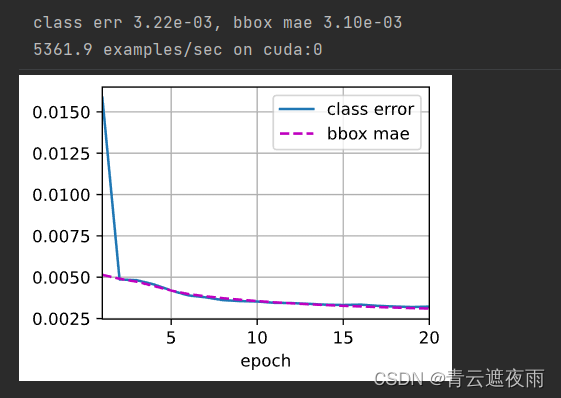
预测
#预测
X = torchvision.io.read_image('banana.jpg').unsqueeze(0).float()
img = X.squeeze(0).permute(1, 2, 0).long()
#@save
def offset_inverse(anchors, offset_preds):
"""根据带有预测偏移量的锚框来预测边界框"""
anc = d2l.box_corner_to_center(anchors)
pred_bbox_xy = (offset_preds[:, :2] * anc[:, 2:] / 10) + anc[:, :2]
pred_bbox_wh = torch.exp(offset_preds[:, 2:] / 5) * anc[:, 2:]
pred_bbox = torch.cat((pred_bbox_xy, pred_bbox_wh), axis=1)
predicted_bbox = d2l.box_center_to_corner(pred_bbox)
return predicted_bbox
#@save
def nms(boxes, scores, iou_threshold):
"""对预测边界框的置信度进行排序"""
B = torch.argsort(scores, dim=-1, descending=True)
keep = [] # 保留预测边界框的指标
while B.numel() > 0:
i = B[0]
keep.append(i)
if B.numel() == 1: break
iou = box_iou(boxes[i, :].reshape(-1, 4),
boxes[B[1:], :].reshape(-1, 4)).reshape(-1)
inds = torch.nonzero(iou <= iou_threshold).reshape(-1)
B = B[inds + 1]
return torch.tensor(keep, device=boxes.device)
#@save
def multibox_detection(cls_probs, offset_preds, anchors, nms_threshold=0.5,
pos_threshold=0.009999999):
"""使用非极大值抑制来预测边界框"""
device, batch_size = cls_probs.device, cls_probs.shape[0]
anchors = anchors.squeeze(0)
num_classes, num_anchors = cls_probs.shape[1], cls_probs.shape[2]
out = []
for i in range(batch_size):
cls_prob, offset_pred = cls_probs[i], offset_preds[i].reshape(-1, 4)
conf, class_id = torch.max(cls_prob[1:], 0)
predicted_bb = offset_inverse(anchors, offset_pred)
keep = nms(predicted_bb, conf, nms_threshold)
# 找到所有的non_keep索引,并将类设置为背景
all_idx = torch.arange(num_anchors, dtype=torch.long, device=device)
combined = torch.cat((keep, all_idx))
uniques, counts = combined.unique(return_counts=True)
non_keep = uniques[counts == 1]
all_id_sorted = torch.cat((keep, non_keep))
class_id[non_keep] = -1
class_id = class_id[all_id_sorted]
conf, predicted_bb = conf[all_id_sorted], predicted_bb[all_id_sorted]
# pos_threshold是一个用于非背景预测的阈值
below_min_idx = (conf < pos_threshold)
class_id[below_min_idx] = -1
conf[below_min_idx] = 1 - conf[below_min_idx]
pred_info = torch.cat((class_id.unsqueeze(1),
conf.unsqueeze(1),
predicted_bb), dim=1)
out.append(pred_info)
return torch.stack(out)
def predict(X):
net.eval()
anchors, cls_preds, bbox_preds = net(X.to(device))
cls_probs = F.softmax(cls_preds, dim=2).permute(0, 2, 1)
output = multibox_detection(cls_probs, bbox_preds, anchors)
idx = [i for i, row in enumerate(output[0]) if row[0] != -1]
return output[0, idx]
output = predict(X)
def display(img, output, threshold):
d2l.set_figsize((5, 5))
fig = d2l.plt.imshow(img)
for row in output:
score = float(row[1])
if score < threshold:
continue
h, w = img.shape[0:2]
bbox = [row[2:6] * torch.tensor((w, h, w, h), device=row.device)]
d2l.show_bboxes(fig.axes, bbox, '%.2f' % score, 'w')
display(img, output.cpu(), threshold=0.9)
